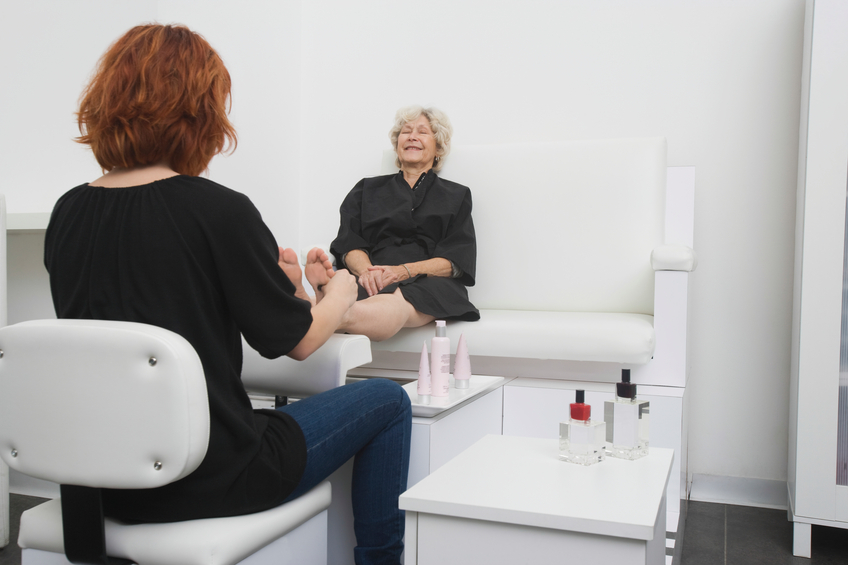A well pedicured foot has become something of the norm for women of all ages in recent years, especially during open-toe season or if you plan to bare your feet for any reason, including pilates or yoga class.
There is no doubt a professional pedicure produces results few of us are talented enough to achieve ourselves, especially as it becomes increasingly difficult with age to bend and twist, not to mention see properly to do a decent job keeping our toes in top shape. And good foot care is an important part of overall health and well being; if you have foot problems that prevent regular activity, it can be the beginning of a functional decline.
But is a salon pedicure the best option for people with diabetes? Because diabetics can have difficulty healing which can lead to ulcers and possibly even amputation, being vigilant about who takes care of your feet is wise. In the past, it was recommended that diabetic patients never get pedicures but it may be unrealistic to expect this advice to be strictly followed. And while visiting nurses can take care of basic foot care, they won’t be concentrating on aesthetics. If you decide to go ahead with a salon pedicure, diabetic or not, be sure to pick a reputable establishment.
Tips for a healthy pedicure:
- Check out sanitation practices – does the foot tub get thoroughly cleaned between clients?
- Note how are the instruments cleaned (stainless steel is more sanitary than wood or other materials)
- Consider investing in your own set of tools and clean them with alcohol between visits
- Let the technician know if you have diabetes – ask them to be gentle
- Water temperature should be between 90 and 95 degrees Fahrenheit
- Avoid razors
- No lotion between toes
- Do not shave before appointment – any nicks or cuts can be a opening for bacteria
Source: Mayo Clinic
Most salons offer a polish change service. For usually less than half the price of a regular pedicure, clients can do the trimming and gentle exfoliation at home and still get a professional polish without risking their health. Bringing your own polish and file can further limit any cross contamination.
Salons tend to be cleanest at the beginning of the day so try to book your next pedicure early and ask that cuticles be gently pushed back and not aggressively cut, which can lead to nicks and cuts.
Many podiatrists also provide medical based pedicures performed by certified clinical podiatric medical assistants trained to examine the feet, treat calluses, trim nails, file and perform foot and leg massage.
Diabetic feet should always be given careful attention, checked daily for cuts or bruises and washed, dried thoroughly and moisturized daily. Wearing breathable socks and comfortable, supportive shoes can also help keep feet healthy. Don’t forget to give your nails a break between pedicures to allow the nail to breathe. Polish can be drying and a nail routinely smothered by polish may have a more difficult time fighting off fungus or infections such as plantar warts.






Add Your Voice
0 Comments
Join the Discussion